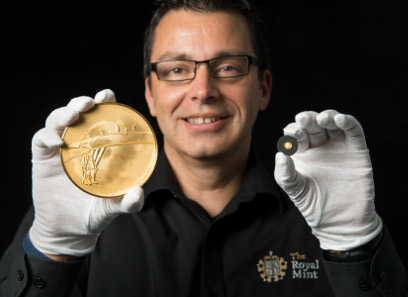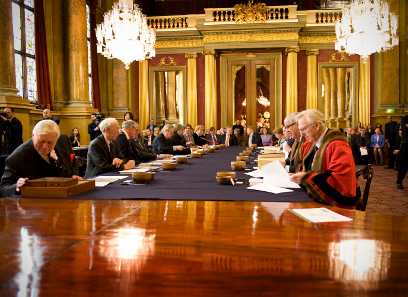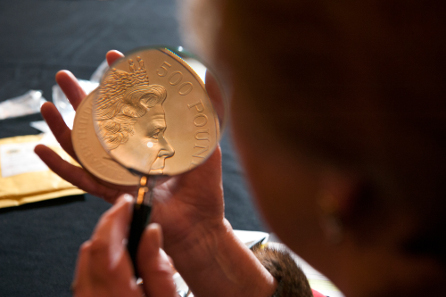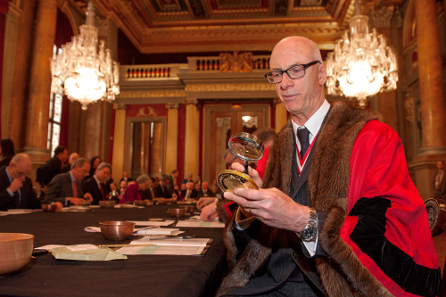February 5, 2015 – On February 3, 2015 both the smallest and the largest UK coins ever minted at The Royal Mint are among 70,000 coins on trial at the Trial of the Pyx.
Copyright: The Royal Mint.
Weighing just one fortieth-ounce and measuring a delicate 8mm wide, the coin features a modern interpretation of Britannia. The imposing Kilo coin measures at 100mm wide and continues The Royal Mint’s five-year commemoration of the centenary of the First World War.
The Trial of the Pyx is an ancient annual ceremony and is one of the oldest quality assurance trials in the world. At the Trial, samples of circulating and commemorative coins produced by The Royal Mint over the last year are selected at random and weighed for accuracy.
Copyright: The Royal Mint.
Now held at Goldsmiths’ Hall, London, the Trial was first recorded publicly in 1282, and is today presided over by the Queen’s Remembrancer or their deputy, who are amongst the highest legal representatives in the country, assisted by an independent jury of Liverymen of the Goldsmiths’ Company.
During the ceremony jury members are presented with Pyx boxes (Pyx being the Roman word for chest). The coins are selected from a random selection provided by The Royal Mint and placed in copper bowls. The remainder are placed in wooden bowls and are then weighed for accuracy. The Trial is then adjourned until May to allow time for trial coins to be tested by Goldsmiths Assay Laboratory and the National Measurement Office.
Copyright: The Royal Mint.
Whilst modern methods such as XRF (X-Ray Fluorescence) are often used in assaying, it is still only the centuries old methods such as cupellation (the fire assaying of gold) that are accurate enough in the testing of metals and therefore remain credible for checking the accuracy of the coins of the realm for the Trial of the Pyx verdict.
Modern legislation does not mention penalties for an adverse verdict by the Pyx jury, yet there have been stiff punishments for failure in the past. The Master of the Mint (today a role held by the Chancellor of the Exchequer) went to prison for six weeks in 1318 and even Sir Isaac Newton was at loggerheads with the jury during his time as master of the Mint when the integrity of his coin samples was questioned.
Copyright: The Royal Mint.
Whilst the Trial is steeped in ancient traditions, and attended by officers with some of the oldest job titles in the land (The Master and Deputy Master of the Royal Mint, The Queen’s Assay Master, The Queen’s Remembrancer), the Trial of the Pyx is as relevant today as it has always been, and continues to play an extremely important role, supporting The Royal Mint’s international reputation for excellence in production.
Adam Lawrence, Deputy Master of the Mint said: “The Trial of the Pyx is one of the oldest quality assurance trials in existence and is as important today as it has ever been, helping ensure integrity and confidence in our UK currency, commemorative and bullion coins. At The Royal Mint, we pride ourselves on having developed our craft to produce the highest quality coinage. The Trial provides an opportunity for The Royal Mint to prove that our state-of-the-art technology and centuries-old hand skills remain second to none”.
Previous Trial of the Pyx proceedings can be seen here.
To learn more about The Royal Mint’s coins please visit the website of the mint.








